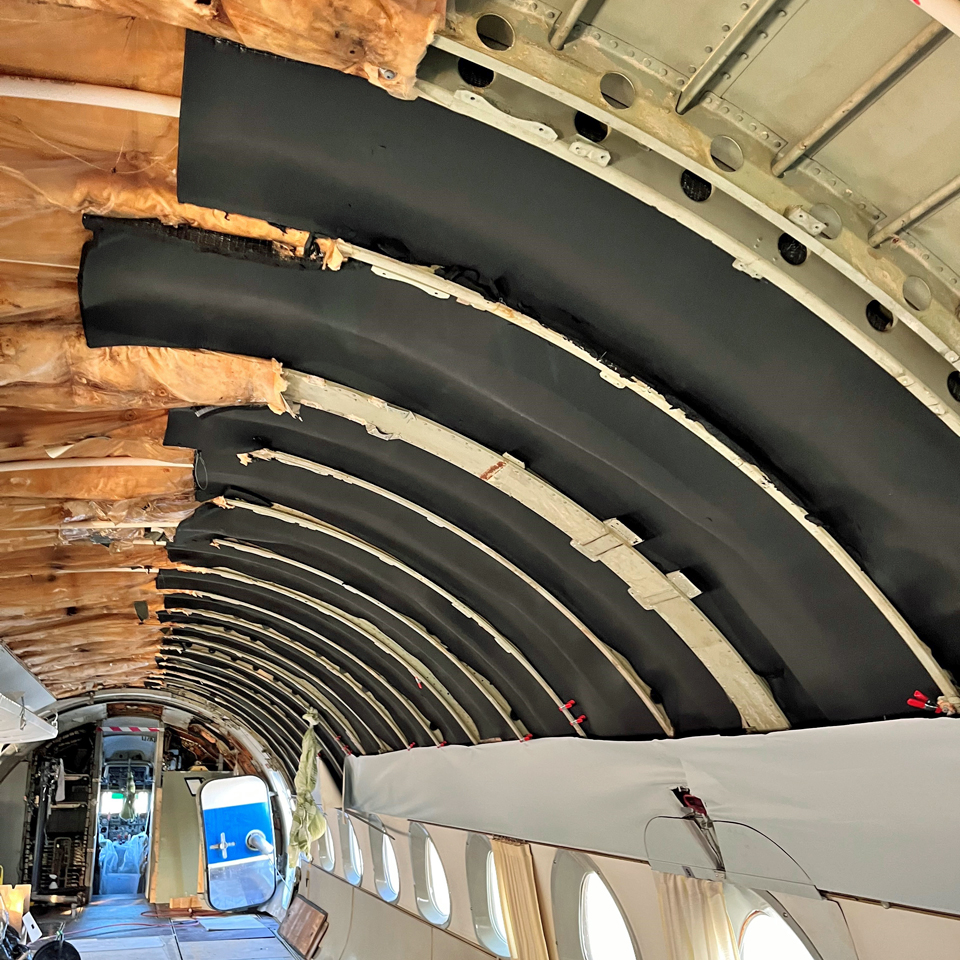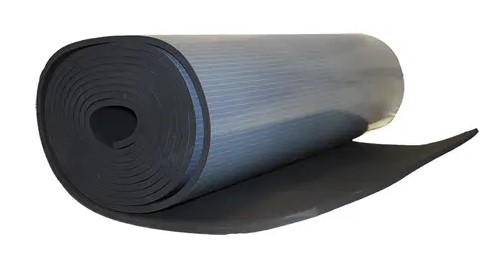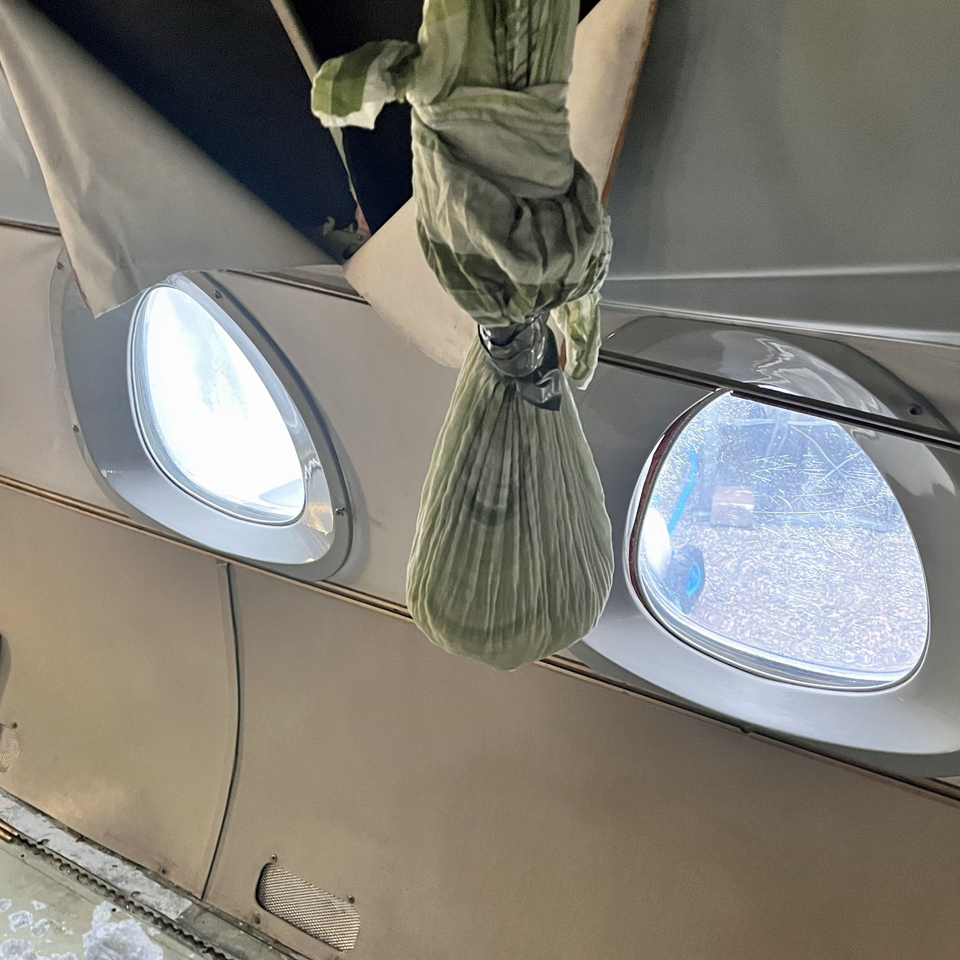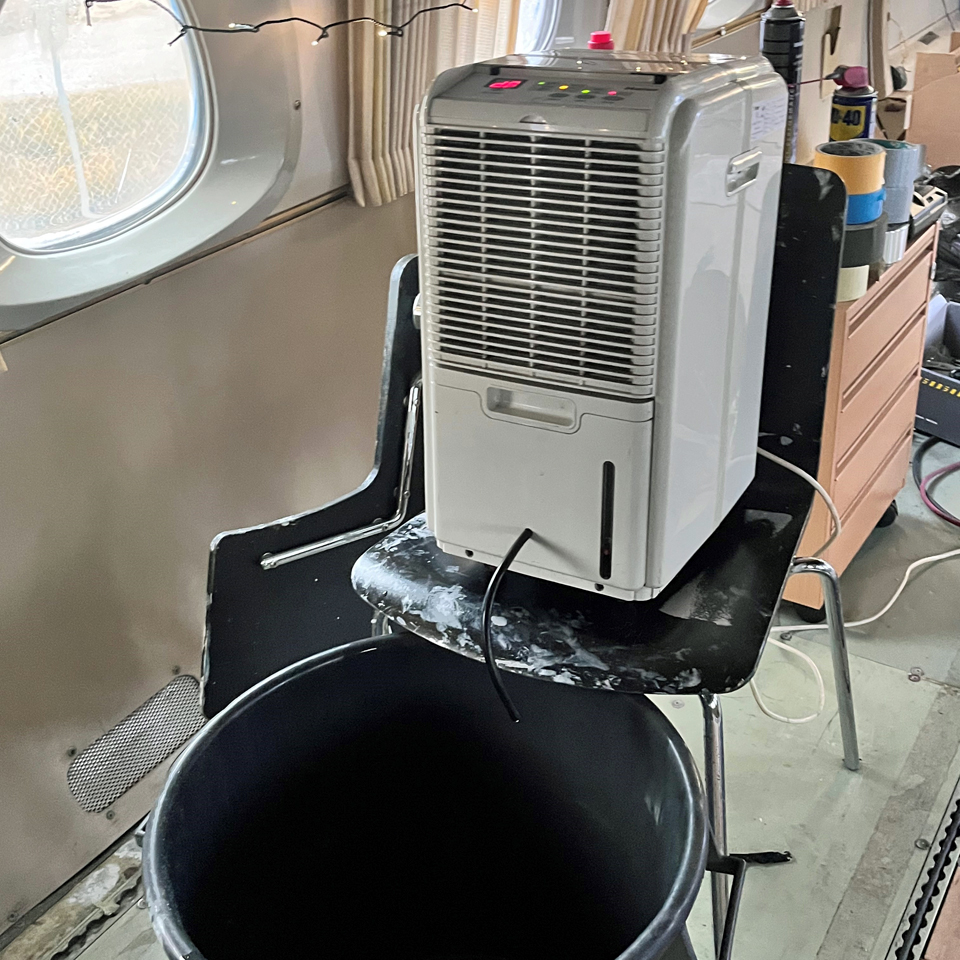Caravelle goes into hibernationTorstai 16.11.2023 - Ismo Matinlauri The days are getting shorter and colder even in Turku, on the south-west coast of Finland. The work period for the autumn has ended and it was time to prepare our beauty into hibernation for the winter.
The last work item for this autumn was to finish the insulation on the cabin walls. On the left-hand side of the cabin wall and ceiling the original insulation material is still there, but on the other side of the cabin the insulation has been dismantled together with the overhead shelves, other interior items, and surface material. We tidied the cut edges of the old insulation material and after analysing different new insulation material alternatives we decided to use cellular rubber, which is available from a hardware store. It is water repelling, odourless and tasteless, and has a self-adhesive layer on one side. This makes its installation significantly simple and fast. It also acts as a vapour barrier, so no separate plastic barrier is needed, as there is on the inside of the old glass wool insulation layer.
An insulation thickness of 10 mm is sufficient for our needs, because the aircraft will not be heated in the winter, nor cooled in the summer. The material is sold in rolls, one metre wide, so it is a material which is easy to cut into suitable pieces. As the airliner has no heating, a solution for controlling humidity had to be found. We discussed the problem with several experts and decided to try two possible solutions.
Ordinary road salt (calcium chloride) was packed into three bags made of fabric, which were hung in the cabin. The salt is a hygroscopic material and absorbs water vapour from the indoor air. Buckets were placed under the bags, and they will be emptied at regular intervals when the salty water drips into them.
We are also testing a small air dehumidifier, which recirculates and cools indoor air, condensing humidity from the air. We set the target and limit value to 60% relative humidity. If the indoor humidity is lower, the dehumidifier switches itself off. When the machine is running, its electricity consumption seems to be 2,6 kWh/day when it is running. This means a monthly electricity cost of 20 euros if the dehumidifier is running all the time. The Caravelle has now gone into hibernation, but we will see if it is possible to wake her up for some Christmas events in December. Photos by Ismo Matinlauri Translation by Erja Reinikainen |
|
Avainsanat: ilmailuhistoria, entisöinti, Caravelle, OH-LEA, Sinilintu |




 Photo by Puuilo
Photo by Puuilo
